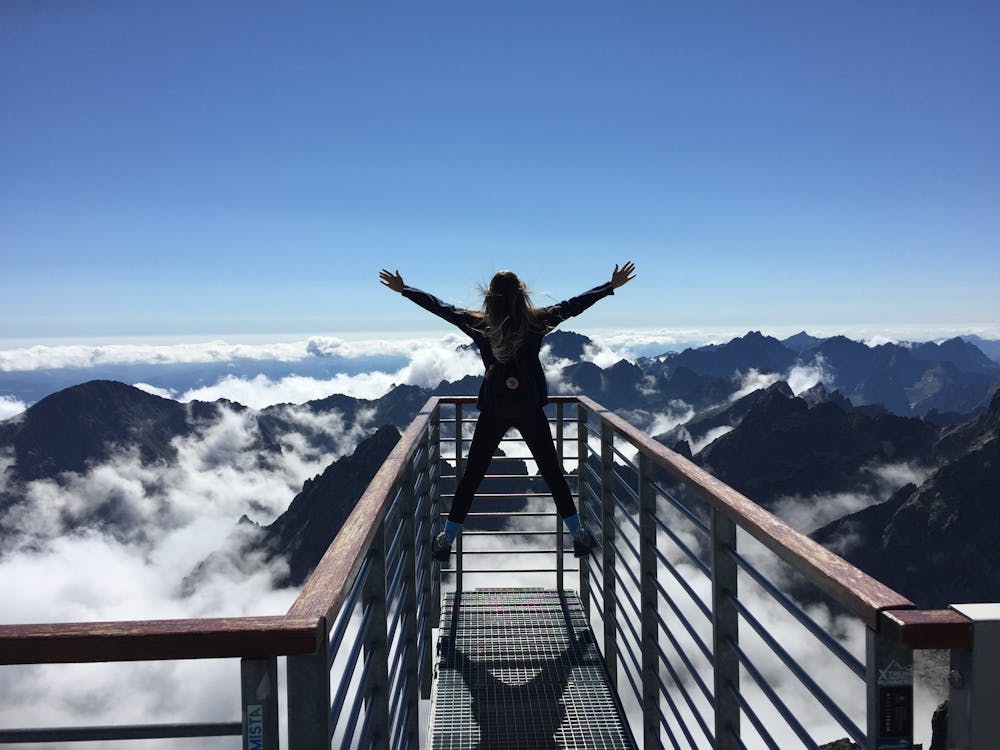A. Leave No Trace Principle
Preserving the pristine beauty of mountains is a collective responsibility. Adhering to the Leave No Trace principle ensures that climbers minimize their impact on the environment, leaving these majestic landscapes unspoiled for future generations.
B. Conservation Efforts in Mountainous Regions
Many mountainous regions are home to unique ecosystems. Exploring ways to support local conservation efforts helps maintain the delicate balance between adventure and environmental sustainability.
C. Sustainable Practices for Climbers
From waste management to choosing eco-friendly gear, climbers can adopt sustainable practices that reduce their ecological footprint. Responsible climbing involves making choices that align with the long-term health of our planet.
VIII. Training for Mountain Climbing
A. Physical Conditioning
Building strength and endurance through targeted exercises is crucial for successful climbs. A well-rounded fitness routine prepares climbers for the physical demands they'll face on the mountain.
B. Mental Preparation
Climbing involves mental fortitude. Training the mind to stay focused, make quick decisions, and manage stress is as important as physical conditioning.
C. Technical Skills Development
Mastering technical skills, such as rock and ice climbing techniques, enhances a climber's ability to navigate diverse terrains. Ongoing skill development is key to tackling more challenging ascents.
IX. The Thrill of Summiting
A. Sense of Accomplishment
Reaching the summit is a profound achievement, symbolizing determination and perseverance. The joy of standing atop a peak and surveying the world below is an unparalleled reward for climbers.
B. Embracing the Journey over the Destination
While reaching the summit is a goal, the true essence of mountain climbing lies in embracing the entire journey. The challenges faced, lessons learned, and personal growth throughout the climb contribute to the adventure's richness.
C. Perseverance and Determination
Mountain climbing teaches invaluable life lessons. The ability to persevere through difficulties and overcome obstacles fosters a mindset of determination that extends beyond the mountainous terrain.
X. Overcoming Fear and Building Confidence
A. Dealing with Altitude Anxiety
Altitude anxiety is a common challenge in mountain climbing. Understanding and managing these fears, coupled with gradual acclimatization, helps climbers build confidence in higher elevations.
B. Confidence-Building Strategies
Building confidence involves setting achievable goals, celebrating small victories, and gradually taking on more significant challenges. Confidence is a valuable asset in the unpredictable world of mountain climbing.
C. Learning from Setbacks
Setbacks are inherent in any adventurous pursuit. Learning from failures, adapting strategies, and bouncing back contribute to a climber's resilience and long-term success.
(Continued in the next table...)
XI. Joining Mountain Climbing Communities
A. Connecting with Like-minded Individuals
Joining climbing communities provides a platform to connect with fellow enthusiasts, share experiences, and gain valuable insights. The sense of community fosters a supportive environment for climbers of all levels.
B. Group Expeditions and Their Benefits
Group expeditions offer safety in numbers, shared responsibilities, and the opportunity to learn from more experienced climbers. The camaraderie built during group climbs enhances the overall experience.
C. Online Platforms for Climbers
In the digital age, online platforms connect climbers globally. Forums, social media groups, and dedicated websites offer a virtual space for sharing tips, organizing climbs, and building a network within the climbing community.
XII. The Role of Guides and Instructors
A. Importance of Experienced Guides
Guides play a pivotal role in ensuring a safe and enjoyable climbing experience. Their expertise, knowledge of local conditions, and leadership skills contribute to the success of a climb.
B. Choosing the Right Instructor
For those new to mountain climbing, selecting a qualified instructor is crucial. A reputable instructor provides proper training, imparts essential skills, and guides climbers through their early journeys.
C. Mentorship in Mountain Climbing
Mentorship fosters a culture of learning and growth. Experienced climbers mentoring novices not only enhances skills but also creates a sense of camaraderie and continuity within the climbing community.
XIII. Cultural and Spiritual Experiences
A. Indigenous Cultures in Mountainous Regions
Exploring mountainous regions often involves encounters with indigenous cultures. Respecting and learning from these communities enriches the climbing experience, offering a deeper connection to the places being explored.
B. Spiritual Connections to the Mountains
For many, mountains hold spiritual significance. Whether through ancient beliefs or personal reflections, climbers often find a sense of transcendence and spiritual connection in the high-altitude realms.
C. Responsible Tourism in Cultural Hotspots
Balancing adventure with respect for local cultures is essential. Practicing responsible tourism ensures that climbing activities contribute positively to local communities and cultural preservation.
XIV. Future Trends in Mountain Climbing
A. Technological Advancements in Gear
As technology advances, climbing gear evolves. Innovations in materials, design, and safety features continue to enhance the efficiency and safety of climbing equipment.
B. Sustainability Initiatives in the Climbing Industry
A growing awareness of environmental issues prompts the climbing industry to adopt sustainable practices. From eco-friendly gear manufacturing to carbon-neutral expeditions, the industry is moving towards a greener future.
C. Inclusivity and Diversity in Mountain Climbing
Efforts to make




0 Comments